NFL Photos | NFL Photography Gallery | NFL.com
All-time No. 1 overall draft pick team
Recently, we unveiled the NFL's all-time undrafted team. So, it makes sense to go straight to the top and see if a team of No. 1 overall draft picks can be compiled.
Unlike the talent-laden all-time undrafted team, the all-time No. 1 overall team was a challenge to put together. While loaded at some positions -- quarterback, running back, defensive line -- there has been a severe shortage of players taken No. 1 overall at other positions. Take a look ...

Draft: 1983
College: Stanford
NFL career: 16 seasons. Denver Broncos, 1983-1998.
There have been 31 quarterbacks (33 if you count the American Football League drafts of 1961-66, which we will in this exercise ... more on that later) taken with the No. 1 overall draft selection in the NFL draft (dating back to 1936). Four of those quarterbacks are in the Pro Football Hall of Fame (Elway, Troy Aikman, Terry Bradshaw and Joe Namath -- Namath was a No. 1 overall pick in the American Football League draft). Five years after retiring, Peyton Manning will join them in Canton.
On top of being one of the most prolific passers in the game's history, Elway was also an accomplished scrambler; adding 3,407 yards and 33 touchdowns rushing to his 51,475 yards and 300 touchdowns passing. Elway took the Broncos to five Super Bowls, winning the final two to finish his career in spectacular style.

Draft: 1978
College: Texas
NFL career: 8 seasons. Houston Oilers, 1978-1984; New Orleans Saints, 1984-85.
The powerful Campbell was the frontman for the "Luv Ya Blue" Oilers of the late 1970s. Campbell led the NFL in rushing in his first three seasons (including a career-high 1,934 yards in 1980), was a five-time Pro Bowl selection and 1991 inductee into the Pro Football Hall of Fame.
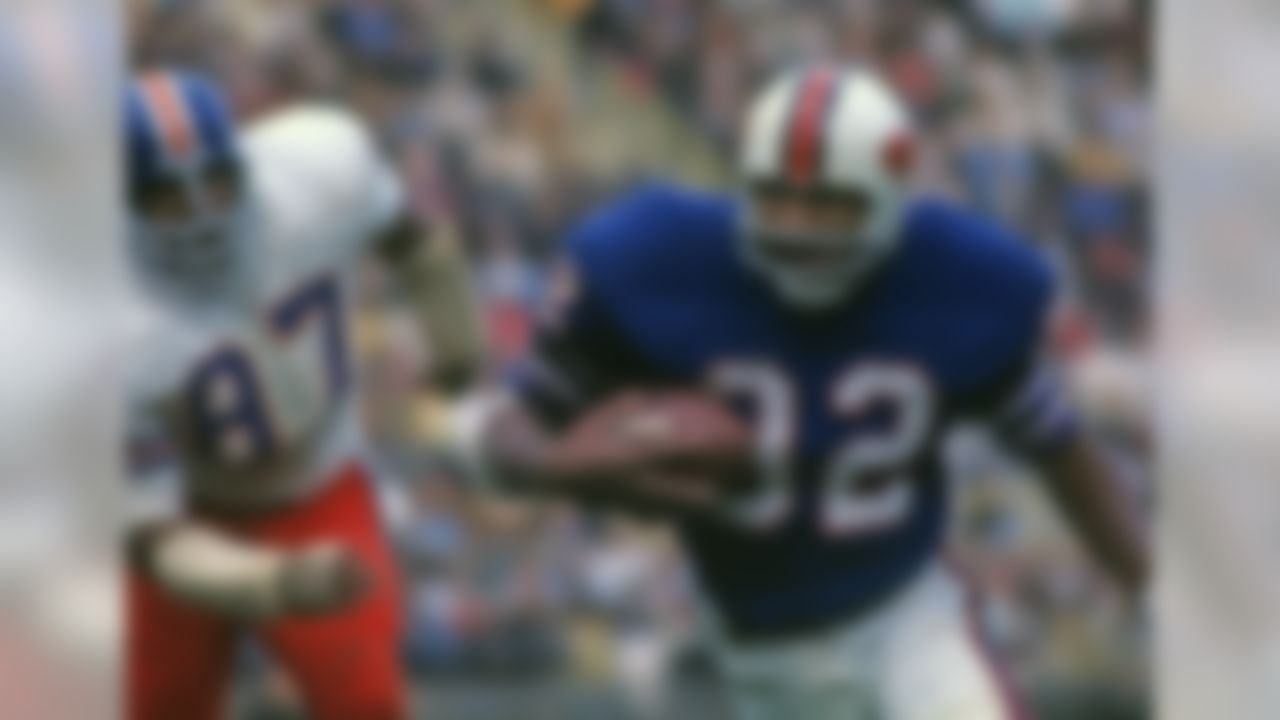
Draft: 1969
College: USC
NFL career: 11 seasons. Buffalo Bills, 1969-1977; San Francisco 49ers, 1978-79.
While running backs -- or halfbacks, fullbacks or blocking backs -- were popular picks at the top of the draft in its early, pre-modern-era days, there hasn't been a running back taken with the No. 1 overall choice since 1995 when Ki-Jana Carter went to the Cincinnati Bengals.
Simpson was the first of three running backs taken No. 1 overall in a 10-year span from 1969-1978; Campbell, of course, bookended that span. Simpson was the first to rush for 2,000 yards in a single season (doing so in a 14-game schedule), and retired as the NFL's second-leading rusher of all time (behind only the incomparable Jim Brown). Simpson was a 1985 inductee into the Pro Football Hall of Fame.

Draft: 1996
College: USC
NFL career: 11 seasons. New York Jets, 1996-99; Tampa Bay Buccaneers, 2000-03; Dallas Cowboys, 2004-05; Carolina Panthers, 2006.
Johnson enjoyed a productive NFL career. He helped the Jets bounce back from a 1-15 disaster of a season in 1996 to advance to the AFC championship game just two years later. In 2002, Johnson was a member of the Buccaneers' Super Bowl XXXVII-winning team. Johnson posted four 1,000-yard receiving seasons and was a three-time Pro Bowl selection.

Draft: 1984
College: Nebraska
NFL career: 17 seasons. New England Patriots, 1984-1992; Miami Dolphins, 1993-95; Philadelphia Eagles, 1996-98; Washington Redskins, 1999-2000.
Only two wide receivers have been selected No. 1 overall in the NFL draft. Fryar was the first. Fryar was a member of the Patriots when the team advanced to Super Bowl XX. Fryar posted five 1,000-yard receiving seasons, and was also a five-time Pro Bowl selection.

Draft: 1960
College: LSU
NFL career: 11 seasons. Houston Oilers, 1960-63; Oakland Raiders, 1964-69; Kansas City Chiefs, 1970.
Cannon actually was a No. 1 overall draft pick of the Los Angeles Rams of the NFL, but opted to play in the upstart American Football League instead. He also originally was a running back as a pro football player, but moved to tight end when he played for the Raiders. No tight end ever has been selected No. 1 overall in the draft. Cannon was a two-time Pro Bowl selection and was a member of the Raiders team that advanced to Super Bowl II.
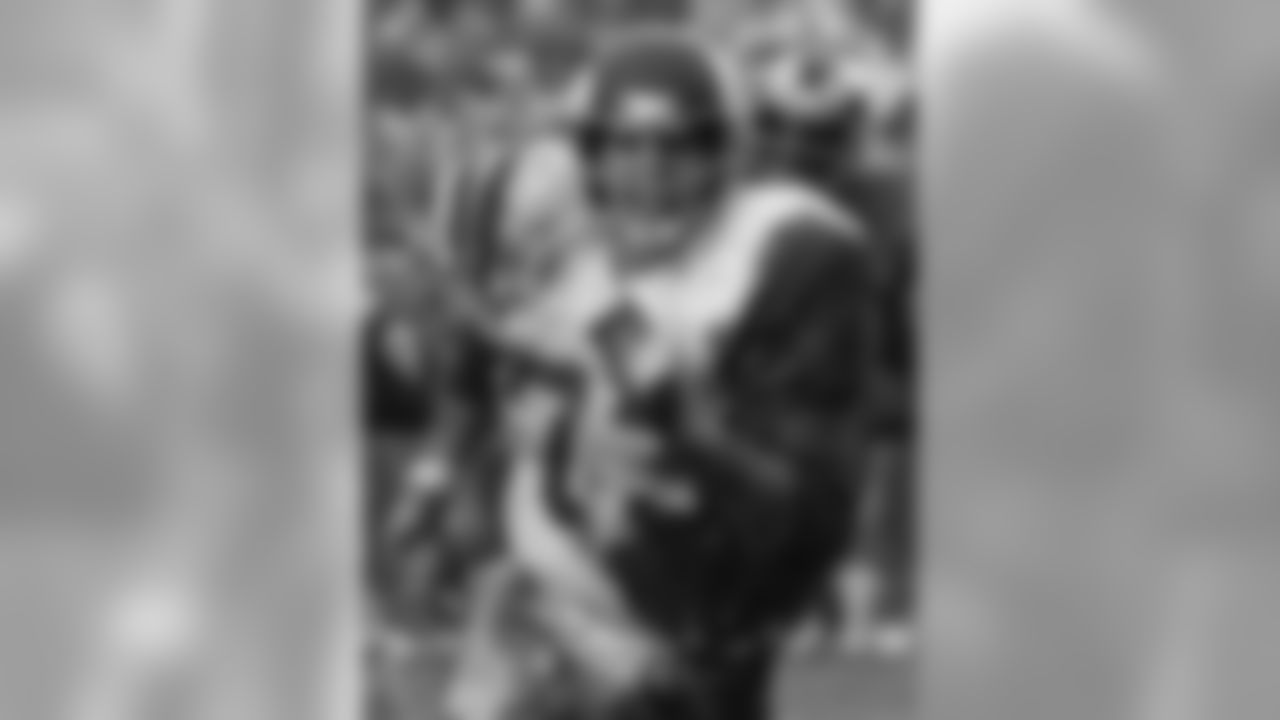
Draft: 1968
College: USC
NFL career: 15 seasons. Minnesota Vikings, 1968-1981; Los Angeles Rams, 1982.
Yary went on to a decorated career with the Vikings, earning seven Pro Bowl selections. He was a member of all four Minnesota teams to reach the Super Bowl and was a 2001 inductee into the Pro Football Hall of Fame. After Yary's selection at No. 1 overall, it would be another 29 years before another offensive lineman would be selected No. 1 overall (Orlando Pace by the St. Louis Rams in 1997).
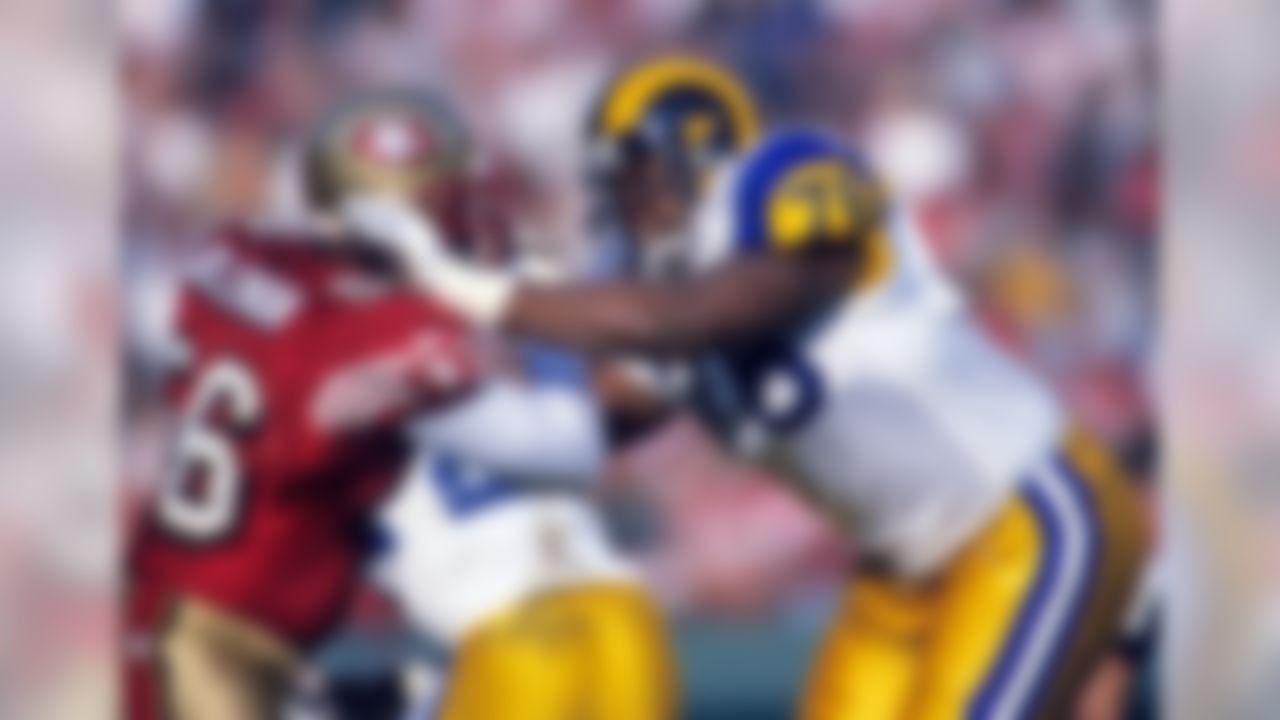
Draft: 1997
College: Ohio State
NFL career: 13 seasons. St. Louis Rams, 1997-2008; Chicago Bears, 2009.
Pace was a vital cog in the offensive onslaught machine that was the Rams' "Greatest Show on Turf." Pace was a seven-time Pro Bowl pick and three-time All-Pro selection during a 13-year NFL career.
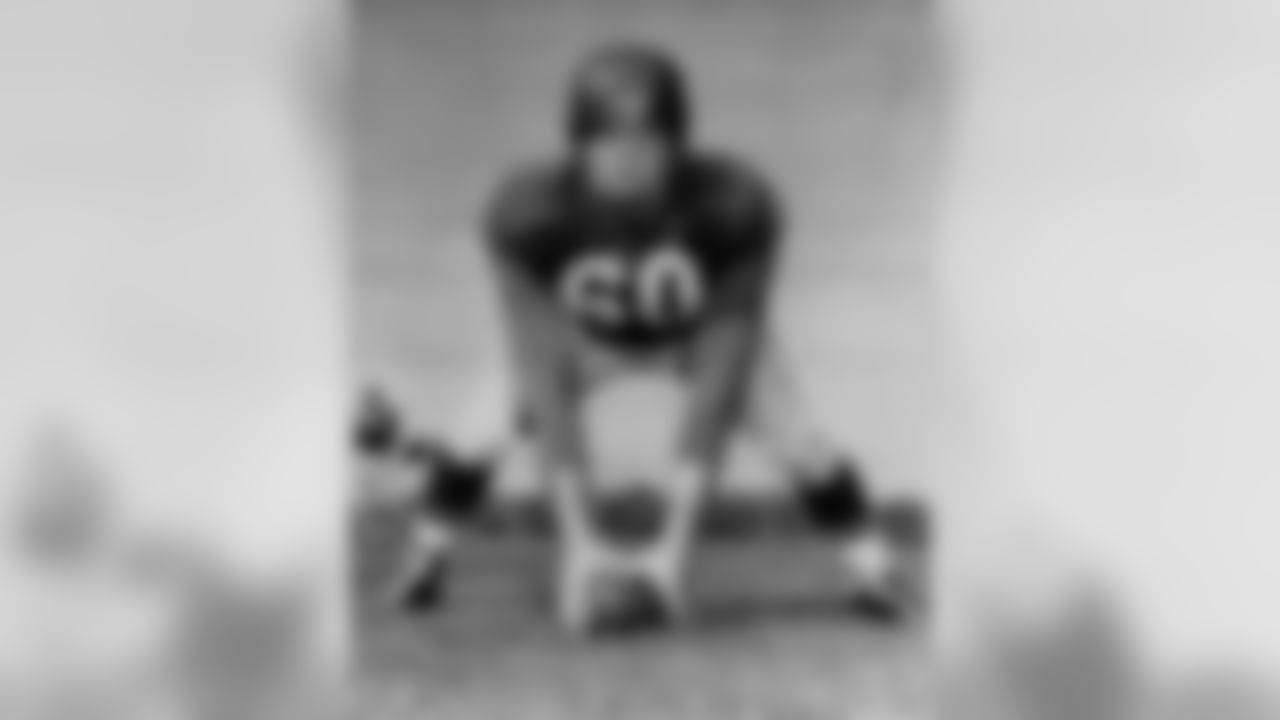
Draft: 1949
College: Penn
NFL career: 14 seasons. Philadelphia Eagles, 1949-1962.
Bednarik is arguably the greatest center in football history. To top that off, he also played linebacker (more on that later), and was the last of the two-way, 60-minute players. He was a member of the Eagles' last two championship teams -- 1949 and 1960. That 1960 NFL Championship Game marked the only playoff defeat for the Vince Lombardi-led Green Bay Packers.
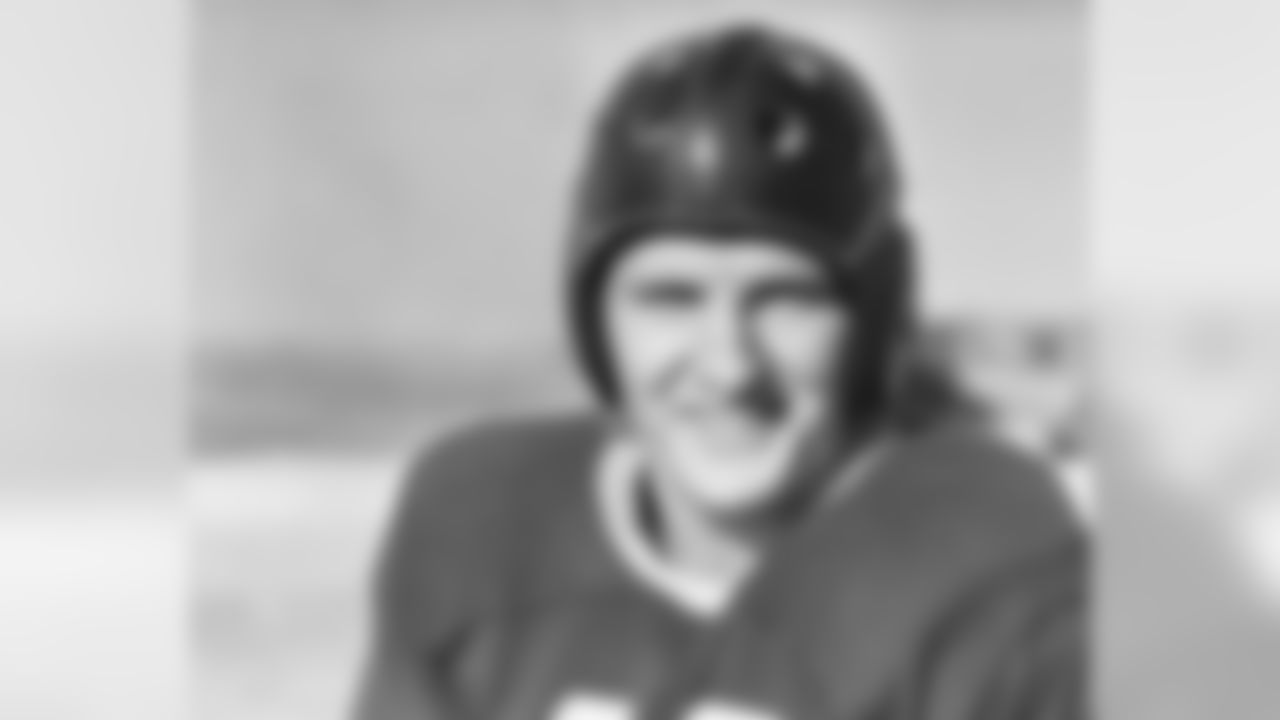
Draft: 1939
College: TCU
NFL career: 7 seasons. Chicago Cardinals, 1939-1940; Washington Redskins, 1941-47.
There was a time when Aldrich was hailed as the greatest lineman that the Southwest had ever produced and his name spelled terror for opposing linemen. He could also play some linebacker; he recorded eight career interceptions in the NFL, including a pick six.
Aldrich blocked for the incomparable Sammy Baugh while with the Redskins (Baugh called Aldrich "the toughest player I ever knew." That's high praise from a legend of the game). Aldrich's pro football career was cut short due to World War II, but he did earn two Pro Bowl selections. Aldrich was a 1960 inductee into the College Football Hall of Fame.

Draft: 2008
College: Michigan
NFL career: 7 seasons. Miami Dolphins, 2008-2012; St. Louis Rams, 2013-14.
Long was a Pro Bowl selection in each of his first four NFL seasons. In the 2013 offseason, Long signed a lucrative contract with the St. Louis Rams, but lasted just two seasons with the team. Long suffered a season-ending ACL tear midway through the 2014 season. He signed with the Atlanta Falcons in September, but has yet to play a down in the 2015 season.

Draft: 1985
College: Virginia Tech
NFL career: 19 seasons. Buffalo Bills, 1985-1999. Washington Redskins, 2000-03.
A strong case could be made that Smith is the best No. 1 overall pick in the draft's modern era (since 1967). Smith registered a league-record 200 sacks, was a two-time defensive player of the year and an 11-time Pro Bowl pick. His work on defense helped the Bills reach four consecutive Super Bowls. Smith was a 2009 inductee into the Pro Football Hall of Fame.

Draft: 1963 (AFL)
College: Grambling State
NFL career: 13 seasons. Kansas City Chiefs, 1963-1975.
Buchanan was a No. 1 overall choice in the AFL draft -- not the NFL draft (though, a strong case could be made that he should have gone No. 1 in the NFL draft ... QB Terry Baker went No. 1 in the NFL draft, and he didn't exactly pan out; he made one NFL start). Buchanan is the only No. 1 pick from the AFL drafts on this team. If we were just going by NFL drafts, then Bubba Smith (1967 NFL Draft, Baltimore Colts) would occupy this roster spot.
Buchanan was the first African-American No. 1 overall draft choice in pro football history. He went on to become an eight-time Pro Bowl selection, and played in two Super Bowls -- winning Super Bowl IV -- with the Chiefs. Buchanan was a 1990 inductee into the Pro Football Hall of Fame.

Draft: 1976
College: Oklahoma
NFL career: 9 seasons. Tampa Bay Buccaneers, 1976-1984.
Selmon was the first draft choice in Buccaneers history, and was vital to the franchise's rise from 0-26 laughingstock to a playoff team in its fourth season of existence. During the Buccaneers' 1979 season -- in which the team reached the NFC championship game -- Selmon earned NFL Defensive Lineman of the Year honors. Selmon was a 1995 inductee into the Pro Football Hall of Fame.

Draft: 1974
College: Tennessee State
NFL career: 15 seasons. Dallas Cowboys, 1974-78, 1980-89.
Jones was a vital piece of Dallas' "Doomsday Defense," earning three Pro Bowl selections. He was a member of the Cowboys' Super Bowl XII-winning team. In all, Jones played in three Super Bowls with the Cowboys. Aside from a brief hiatus to pursue a boxing career, Jones never missed a game, playing in 232 games during a 15-year NFL career.

Draft: 1966
College: Texas
NFL career: 11 seasons. Atlanta Falcons, 1966-1976.
Nobis was the No. 1 overall pick in both the AFL and NFL drafts in 1966 -- the only player to be picked No. 1 by both leagues (quarterback Roman Gabriel came the closest, getting picked No. 1 overall by the Oakland Raiders and No. 2 overall by the Los Angeles Rams in 1962). Nobis went on to a productive NFL career, earning five Pro Bowl selections along the way.

Draft: 1949
College: Penn
NFL career: 14 seasons. Philadelphia Eagles, 1949-1962.
As the last of the two-way NFL players, Bednarik earns multiple spots on this team. Bednarik's tackle of New York Giants halfback Frank Gifford is one of the NFL's most iconic moments, and the image of Bednarik standing over a crumpled Gifford will be etched into the game's lore for as long as football is played. Later that season he made another key tackle on another Pro Football Hall of Fame runner, this time it was Jim Taylor on the final play of the 1960 title game. That marks the last time that the Eagles won an NFL championship.
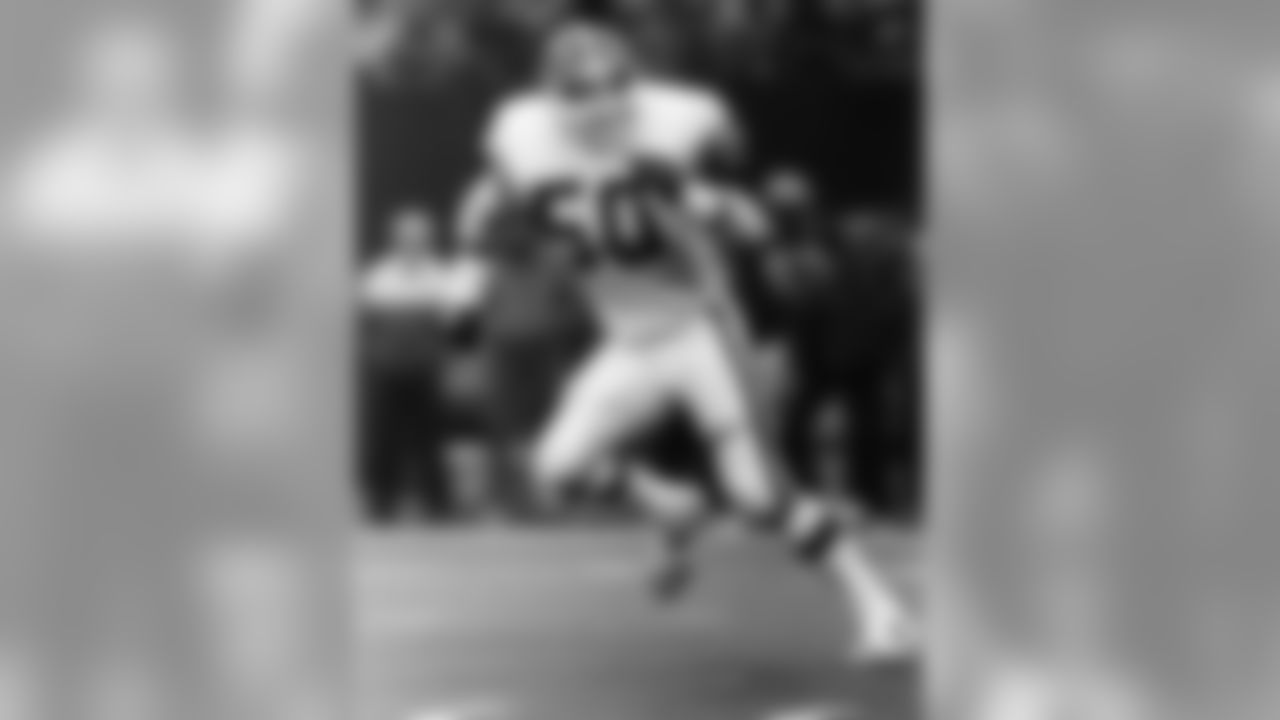
Draft: 1979
College: Ohio State
NFL career: 6 seasons. Cleveland Browns, 1982-85. San Francisco 49ers, 1986-87.
Only four linebackers have been selected No. 1 overall in the draft, and that counts Bednarik, who also played center. The fourth was Aundray Bruce -- who is considered one of the draft's all-time busts. So, Cousineau -- who didn't exactly produce as a pro -- earns a spot by default. This will be a running theme for the rest of this all-time No. 1 overall draft pick team.

Draft: 1941
College: Michigan
NFL career: 2 seasons. Los Angeles Rams, 1946-47.
Harmon is the first of three defensive backs on this all-time No. 1 overall draft pick team who were selected No. 1 overall primarily as an offensive player, but played defensive back as well because that's how football players rolled back in the day. In two seasons in the NFL, Harmon picked off two passes. "Old 98" made it into the College Football Hall of Fame, but World War II -- and a desire to pursue a career in the movies (he was married to movie actress and model Elyse Knox) -- cut short his NFL career.

Draft: 1956
College: Colorado State
NFL career: 7 seasons. Pittsburgh Steelers, 1956-59. Washington Redskins, 1959-1960. Baltimore Colts, 1961; San Diego Chargers, 1963.
Glick is the only true defensive back to be selected with the No. 1 overall draft choice. During his NFL career, he collected 14 interceptions and recovered 12 fumbles. He also did some placekicking for the Steelers in his first two seasons.
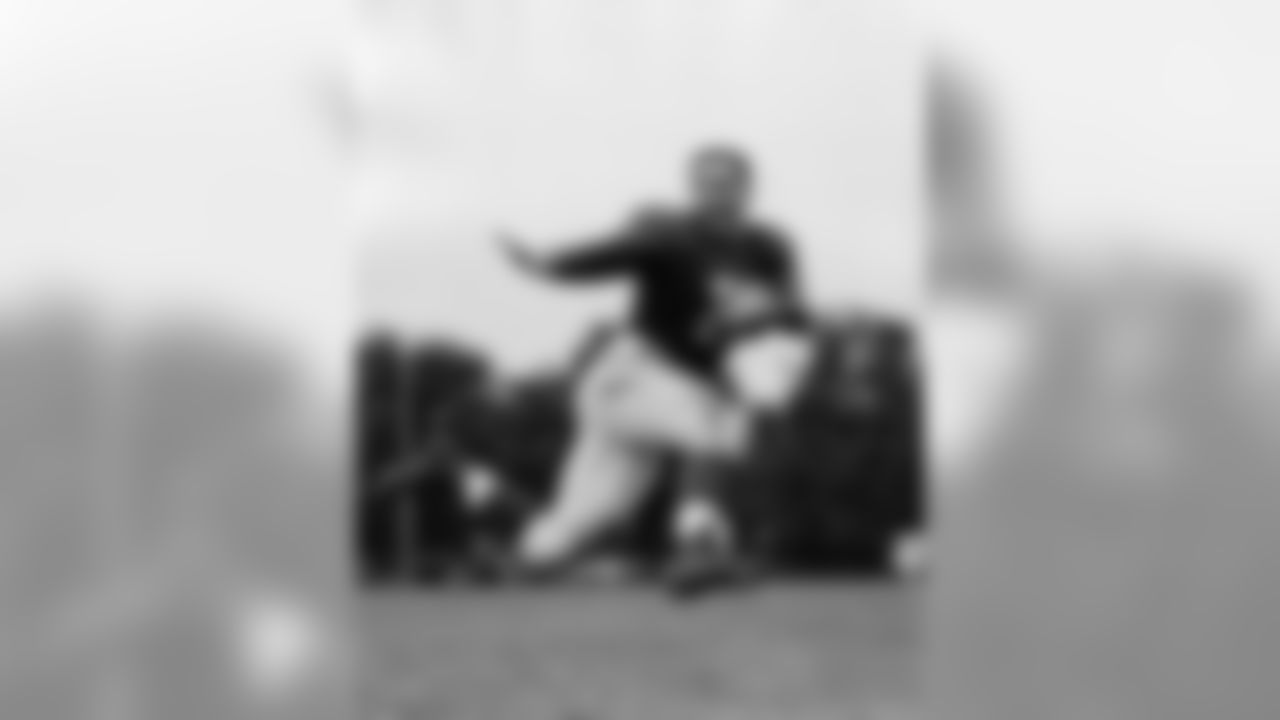
Draft: 1945
College: Georgia
NFL career: 9 seasons. Chicago Cardinals, 1947-1955.
Trippi was a 1969 inductee into the Pro Football Hall of Fame, but mostly for his exploits as one of the most prolific offensive threats of his era. He was a member of the last Cardinals team to win the NFL title, doing so in his rookie season of 1947. A year later, the Cardinals were back in the NFL championship game, but lost to the Philadelphia Eagles in one of the most famous weather games in NFL history. As a defensive back, Trippi had four career interceptions, including a 59-yard pick six during that 1947 championship season.

Draft: 1940
College: Tennessee
NFL career: 4 seasons. Brooklyn Dodgers, 1940, 1943; Washington Redskins, 1943; Boston Yanks, 1944-45.
"Bad News" Cafego is a Volunteers legend and 1969 inductee into the College Football Hall of Fame. However, his NFL career was kinda all over the place. Cafego played quarterback, running back, caught some passes, and was even a punter. On the defensive side of the ball, Cafego recorded two interceptions as an NFL player.



